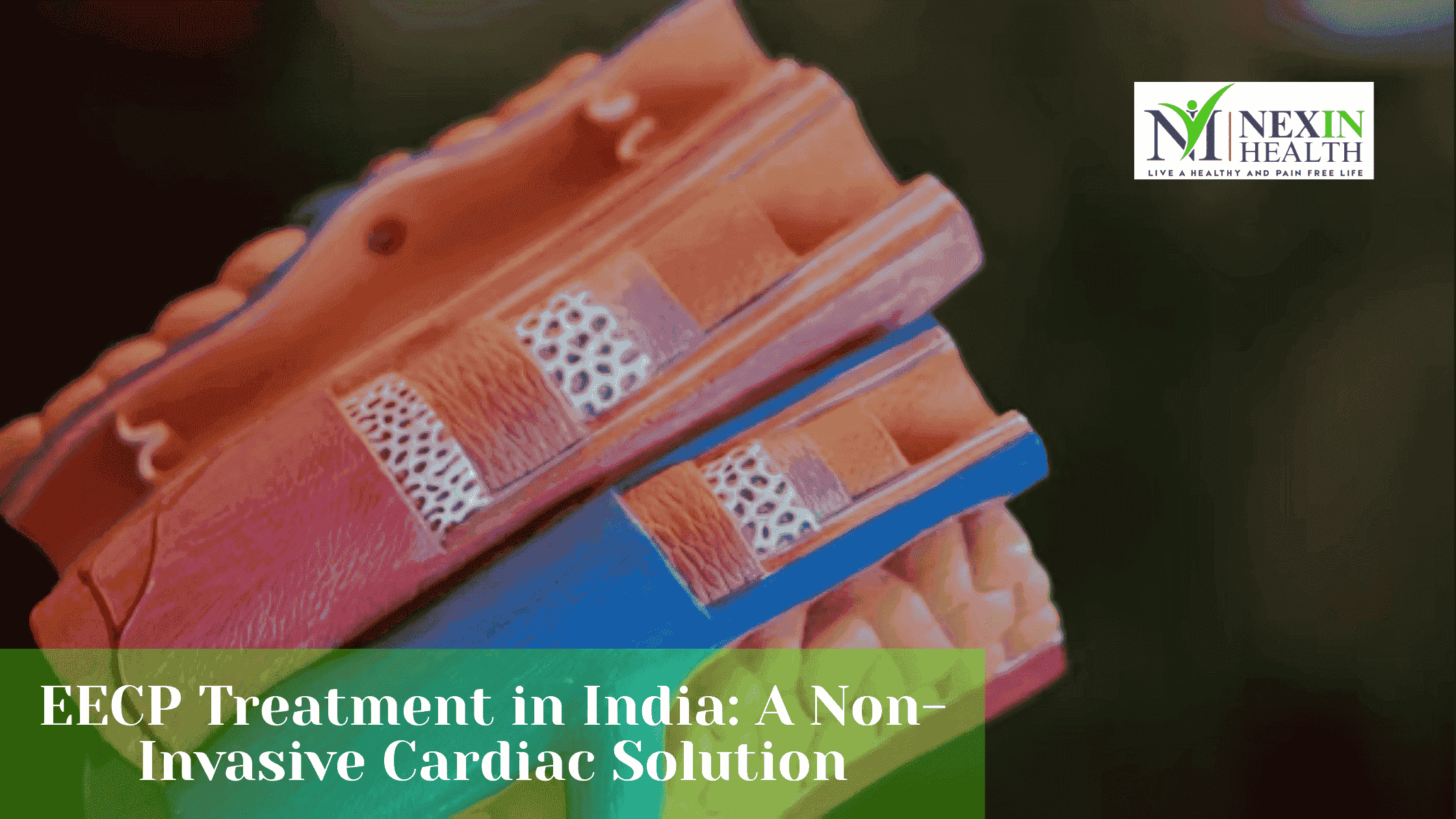How India’s Aging Population Is Driving Innovation in EECP Accessibility

Introduction
India is undergoing a silent demographic shift. As healthcare improves and life expectancy rises, the country’s elderly population is growing at an unprecedented rate. By 2050, over 300 million Indians will be aged 60 or older. With age comes wisdom, but also a sharp rise in chronic diseases—especially heart-related conditions.
One of the most significant outcomes of this aging trend is the urgent need for safe, affordable, and non-invasive cardiac treatments. Among the most promising solutions is Enhanced External Counterpulsation (EECP)—a therapy that is changing how heart care is delivered, especially for seniors.
In this blog, we explore how India’s aging population is driving innovation and accessibility in EECP treatment, and how EECP treatment in India is helping senior citizens live longer, more active lives.
Why Aging Indians Need Safer Alternatives in Heart Care
Heart disease is the leading cause of death among India’s elderly. As people age, their heart muscles weaken, arteries narrow, and comorbidities like diabetes, hypertension, arthritis, and kidney disease become more common. For many senior citizens, surgery is no longer a safe option.
Common issues with cardiac surgery in older patients include:
- Poor wound healing
- Reaction to anesthesia
- Higher risk of infections
- Long and difficult recovery periods
- Physical and emotional trauma
These challenges have created strong demand for safer, outpatient-based alternatives—like EECP therapy, which does not involve cuts, hospitalization, or drugs.
Read more: Another Article
What is EECP and Why is It Elderly-Friendly?
Enhanced External Counterpulsation (EECP) is a non-invasive, outpatient heart therapy that improves blood flow to the heart without surgery.
How EECP Works:
- Large cuffs are wrapped around the patient’s legs and thighs.
- These cuffs inflate and deflate in rhythm with the heartbeat.
- The pressure pushes more blood toward the heart when it relaxes.
- Over time, this builds collateral arteries (natural bypasses), improves oxygen supply, and reduces heart workload.
A full course typically involves 35–40 sessions of one hour each, over 6–7 weeks.
EECP is particularly suited for elderly patients because:
- It requires no anesthesia
- There’s no cutting, stents, or hospital stay
- It’s painless and relaxing
- The sessions can be done comfortably in a reclining position
How India’s Aging Population is Influencing EECP Innovation
1. Demand for Non-Invasive, Home-Friendly Therapies
As more elderly people live longer, there’s growing demand for therapies that can be accessed safely and comfortably. Many Indian families now prefer day-care models for elderly cardiac care, and EECP fits perfectly into that model.
This demand has led to:
- Smaller, portable EECP units that can fit in urban clinics
- Customized elderly-friendly treatment protocols
- Scheduling options that suit retired or home-bound individuals
2. More Clinics in Tier 2 and Tier 3 Cities
Many seniors live in smaller cities with limited access to surgical care. With rising need, providers are expanding EECP access to these regions.
Healthcare innovators are setting up satellite EECP centers in cities like:
- Madurai
- Nagpur
- Bhopal
- Udaipur
- Kochi
- Bhubaneswar
Thanks to this expansion, elderly patients no longer need to travel to metros for cardiac treatment.
3. Integration of Digital Health and EECP
Aging patients often struggle with multiple appointments and travel logistics. To address this, some providers have begun integrating digital health tools with EECP:
- Teleconsultations with cardiologists before and after sessions
- Digital monitoring of vital signs to track progress
- SMS reminders and caregiver support apps for elderly patients
- AI-based diagnostics to determine if a patient is suitable for EECP
These tools reduce the burden on the elderly and help families stay informed about progress.
4. Tailored EECP Protocols for Frail and Elderly Bodies
Not all older adults can tolerate the same intensity of treatment. As a result, providers are now designing low-pressure EECP protocols, with:
- Shorter or alternating-day sessions
- Extra cushioning and recliner support
- Medical supervision for frail or multi-morbid patients
- Flexible scheduling for recovery-based pacing
This personalized care model helps improve comfort and compliance among elderly patients.
5. Training More EECP Technicians for Geriatric Needs
With older patients requiring special care, EECP technicians are being trained in geriatric sensitivity, mobility assistance, and communication. Clinics now emphasize:
- Gentle handling during cuff placement
- Assistance with mobility before and after sessions
- Counseling for fear or confusion about the therapy
These practices make EECP more approachable and welcoming for senior citizens.
What Elderly Patients Say About EECP
- Kanta Devi (age 74, Lucknow): “My doctor said surgery was risky. After EECP, I feel lighter, and I can climb stairs again without gasping.”
- Iqbal (age 68, Surat): “I was weak after a heart attack. My son arranged EECP for me. No pain, no hospital stay. It brought me back.”
- Rajan Nair (age 79, Kochi): “I do my sessions in the morning, go home, and rest. My angina is gone. I feel safer than before.”
Why EECP is a Smart Cardiac Option for Indian Seniors
| Benefit | Why It Matters for Seniors |
| Non-invasive | No surgical trauma, ideal for frail bodies |
| Safe for diabetics, hypertensives, kidney patients | Common comorbidities in elderly |
| Cost-effective | Avoids expensive bypass or angioplasty |
| Day-care based | No hospital admission or overnight stay |
| Supports mental well-being | Reduces anxiety and promotes activity |
Government and Policy Support for Elderly EECP Patients
The growing senior population is also influencing policy-level decisions to expand EECP. Examples include:
- Tamil Nadu government has introduced EECP in district hospitals, with special provisions for senior citizens under public health schemes.
- Ayushman Bharat (PM-JAY) may consider including EECP as a preventive therapy in future.
- State wellness centers in Kerala and Maharashtra are offering EECP alongside geriatric care.
In time, these models could make EECP widely accessible through government programs for India’s elderly.
FAQs
1. Is EECP safe for senior citizens above 70 or 80?
Yes. EECP is specifically designed to be gentle and well-tolerated by elderly patients, even those with weak bones or multiple health issues.
2. Will EECP help if the elderly patient already had a heart surgery?
Yes. EECP is effective for post-bypass or post-stent rehabilitation, especially if symptoms like fatigue or angina return.
3. Can a family member accompany the senior during sessions?
Yes. Most EECP centers welcome caregivers and provide seating or assistance as needed.
4. Are there side effects for older adults?
Minor issues like mild leg soreness or bruising may occur initially, but most seniors find EECP very comfortable after a few sessions.
5. How to know if an elderly person is eligible for EECP?
A cardiologist will do a few basic tests to confirm eligibility. Most stable heart patients qualify, even if they are not fit for surgery.
Conclusion
India’s aging population is not a burden—it’s a powerful force shaping the future of healthcare. The rise of elderly heart patients has driven demand for gentle, safe, and accessible alternatives like EECP treatment in India.
From expanded centers in Tier 2 cities to telemedicine innovations and elderly-friendly care protocols, EECP is becoming more than a treatment—it’s a movement toward dignified aging.
If you or your loved one is a senior citizen facing heart issues, EECP might be the perfect bridge between quality care and graceful recovery—without surgery, fear, or long recovery periods.



